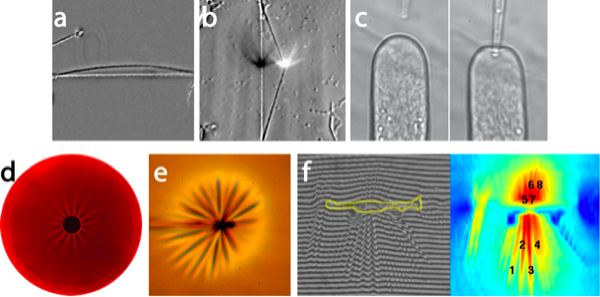SMAT-C
Center of Soft Matter Research and Technology
SMAT-C
Center of Soft Matter Research and Technology
Most biological membranes respond to environmental stimuli with the purpose to satisfy a particular requirement of the organism. Therefore, the concept of “intelligence” is often attributed to biological membranes due to their ability to respond, e.g. to a change in pH, variation in salt concentration, and physical or chemical damage, among others. The so-called smart materials are inspired in the natural intelligence of living systems.
Be accomplished with the incorporation of nanoparticles to films are being applied to develop smart coatings for the protection of aluminum alloys. To simulate the bactericidal property of chromate species, the present project, based on preliminary investigations of our laboratory, proposes the study of the incorporation of copper and silver nanoparticles into inorganic-organic hybrid sol-gel type polymers. Several aspects such as extensibility, adherence, and coating tension are also addressed with the purpose of ensuring the operative life of the coated material.
Interplay between the corrosion protection research line and the present proposal: Our aim is to introduce antimicrobial activity to currently used polymers in the food packaging industry, setting in motion recent investigations on synthesis and functionalization of metallic and oxide nanoparticles. In order to achieve this, we propose to modify polyethylene and polystyrene with either copper or silver nanoparticles, functionalized with amphipathic peptides and fatty acids of long alkyl chain. This functionalization is thought to increase antimicrobial effects and nanoparticle-polymeric matrix interaction.
Smart Films for Corrosion Protection and Packaging
Main Researcher
Maritza Páez
Faculty of Chemistry and Biology
Universidad de Santiago de Chile
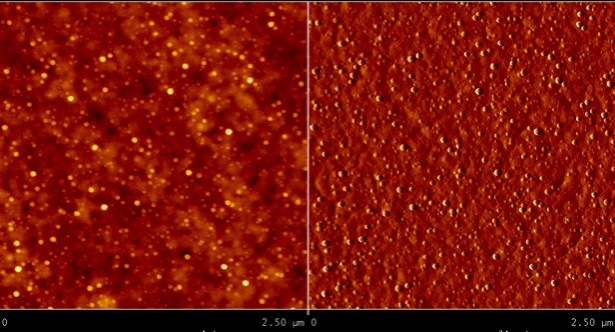
Electrochemical sensors
Main Researcher
José H. Zagal
Faculty of Chemistry and Biology
Universidad de Santiago de Chile
Electrochemical biosensors are a rather new class of sensors employed for the detection of analytes in food. They are based on the electrochemical reactivity of biomolecules. Electrochemistry has become a fast growing option in the field of biosensors for a wide range of food, medical, agricultural and environmental analytes with an expanding, multi-billion dollar market. The combination between fast, sensitive, accurately selective, miniaturizable and low cost electrochemistry-based sensing leads to the evolution of electrochemical sensors of unparalleled selectivity and sensitivity for an enormous variety of analytes or target molecules, if compared to expensive, complicated and slower conventional analytical techniques. There are virtually inexhaustible opportunities and an immense market potential for the development of electrochemical sensors. Low cost instrumentation and miniaturization can allow the development of portable and easy-to-use microsystems.
We are developing hybrid molecular electrode materials containing metallomacrocyclic metal complexes, carbon nanotubes, metal nanoparticles and combinations of these, for the electrochemical detection of relevant molecules in food.
We are making sensors for real samples based on prototypical non-disposable electrodes successfully tested with glucose, some aminoacids and other molecules. The use of flow injection analysis combined with modified and/or hybrid electrodes and screen-printed disposable electrodes fabricated by us should render more robust systems, faster and capable of yielding more precise results.
.
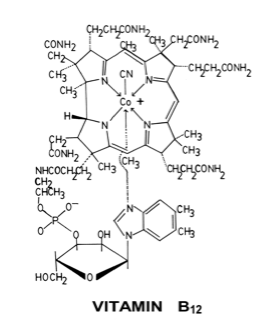
Physical Characterization of Leaf and Fruit Cuticles
Main Researcher
Raúl R. Cordero
Deparment of Physiscs
Universidad de Santiago de Chile
Fruits and aerial green parts of plants are protected by a cuticle. The cuticular membrane (CM) is a non-cellular polymeric thin layer which covers the outer cell layer; it consists of a matrix membrane (MX) made of polysaccharide microfibrils and lipophilic polymers and waxes. The cuticle is not only exposed to abiotic factors such as solar radiation, wind or rain, but it also interacts with microbes and insects. Attending to its importance as a protective layer, we are interested both in the characterization of the cuticle as well as improving its defending properties by using state-of-the-art agrochemical compounds.
We are studying the underlying mechanisms which influence the optical and mechanical properties of cuticles, and also investigating the cuticular permeability of economically important species. Fruit cracking-related studies require assessing the mechanical properties of the cuticle by subjecting isolated samples of CM and MX to tensile tests. These tests involve CM and MX of fruits frequently affected by this problem, such as tomato (Lycopersicon esculentum), grape (Vitis vinifera), and cherry (Prunus avium). Research regarding both permeability and optical properties are being conducted with CM and MX sampled from leaves of both citrus (Citrus lemon) and apples (Malus domestica).
.
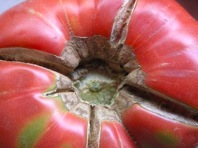
Food Packaging Polymers
Main Researcher
Abel Guarda
Department of Food Science and Technology
Universidad de Santiago de Chile
The aim of food packaging is to extend the shelf-life of the fresh product maintaining its physical, chemical, nutritional and sensorial properties. Among the different materials that are commonly used in food packaging, plastics have presented a great expansion in the recent decades, displacing traditional materials such as glass and tinplate. This growth comes mainly from the properties that plastic materials exhibit, such as mechanical flexibility, low cost, reduced weight and a variety of different formulations. Nevertheless, its use brings concomitant problems related to interaction with food, associated to the spontaneous processes of mass transference from and through the polymeric structure. One of the most important interaction processes that can directly affect a products shelf-life is permeability. Great efforts have been made to control gas transfer through polymer structure in order to develop polymer packaging with barrier properties. Aluminum surface deposition has been developed to reduce gas permeability of polymer films, but in depth studies on polymer surface properties are required giving special notice to chemical composition, hydrophilicity, roughness, crystallinity, conductivity, lubricity and cross-linking.
Although aluminum is the mayor metallic component used as a protective barrier in plastic food packaging, its application has an environmental impact related to each stage of aluminum production; from extraction to processing. On the other hand, Chile is the world largest copper producer. Copper could be an alternative to aluminum which may lead to an increase in the protective properties for plastic food packaging, enhancing both packaging aspects and presentation. Our aim is to determine copper efficiency in polymer surface deposition, evaluating both its properties as a barrier and also its compatibility for the employment in food packaging. Different surface modification techniques and its relationship with barrier properties are being assessed.
.
Physics of thin objects
Main Researcher
Enrique Cerda
Deparment of Physiscs
Universidad de Santiago de Chile
Thin films are ubiquitous examples of soft matter systems; even though they are commonly known as "hard crystalline materials" they behave as soft materials when one of their dimensions is small. It is therefore natural for physicists to present increasing interest in two-dimensional objects. Fruit cuticles, endothelial membranes, vesicles, lipid membranes, nanoparticle films and aggregates, polymer films and silicon nano-membranes show similar mechanical behavior in wrinkling, folding or fracturing phenomena. This discovery has motivated a new research trend which seeks indirect methods to attain material properties of thin films through two dimensional geometry. Observation of wrinkling in thin films under different applied loads or the tearing shape when fractured, have given valuable information regarding the film’s stiffness, adhesion, and fracture energy. With the understanding of these phenomena, we expect to provide a basis not only for improving control in the making of films used in applications such as coatings and packages, but also for the design of responsive surfaces.
In the domain of biological systems, protective coatings such as fruit cuticles, byssal threads, endothelium and epithelial linings of living tissues, have surprising properties in comparison to artificial coatings. One of the definitions of a good coating, is that it must adhere well to the substrate and at the same time be hard enough to protect the underlying material. However, increasing the hardness of a coating makes the material less resilient and more likely to fracture. In addition, different responses between the coating and substrate produce stress concentration at the interface, leading to blistering and separation of the two materials. Biological coatings seem to have found the formula for better design of protective and, at the same time, extensible coatings. Some biological coatings reach 80% of strain before rupture. We believe that part of the large extensibility of such coatings is due to their highly convoluted shape. Most of our internal vessels that transport blood (arteries), air (bronchi), or food (esophagus) have elements of wrinkles and folds that we study with physical models and numerical simulations. Following our previous work using geometry as a tool for studying the behavior of elastic interfaces, we aim to find new assessment methods to evaluate the mechanical properties of living tissues in their in vivo state and complex coatings. Similarly, experiments with Langmuir-Blodgget troughs will give information about the mechanical properties of other interfaces such as lung surfactant, lipid and nanoparticle monolayers, and ultrathin polymer films.
Packaging is the engineering counterpart of the biological protective coating. Food products must be packed in such a way that they are attractive to the consumer and at the same time protected from physical damage caused by vibrations, temperature variations, consumer handling, inappropriate manipulations, etc. However, packages must also be easy to open and close by the consumer. Designing an enclosure satisfying these ambivalent features is challenging. The process of opening a package, in scientific terms, corresponds to the propagation of a fracture that too frequently moves along an unexpected trajectory. Guiding the opening process with designed tear lines (perforated lines) weakens the enclosure and, as common experience reveals, frequently fails. We have built a traction machine that allows the simultaneous measurement of a pulling force and the determination of the fracture trajectories induced by that force. We investigate the natural propagation of a fracture in specific geometries and study the potential applications of our findings to packaging. We also aim to explore the effect of artificially generated tear lines on fracture propagation by using a Cutting Plotter available in our group. The analysis of the mechanisms of tearing helps us to understand the failure in the opening process of typical packages. We also study the conditions under which an opening system based on natural fracture paths is an improvement to tear lines. Although our main focus is to study tearing in brittle films, we also study tearing in materials that are not necessarily brittle, but important in the packaging industry as plastic, paper or metal films, or textile sheets.
We are exploring “packaging” at a smaller scale. Nature has found ways to design responsive enclosures that can rapidly react to changes in the environment. The carnivorous plant Venus Flytrap, for instance, has a rapid closing mechanism to prey on small flies and other insects. The open and closed states correspond to two isometric states of equivalent Gaussian curvature separated by a high-energy barrier. The plant snaps between these two states to minimize the elastic energy. A different example is provided by pollen grains. Pollen grains close to accommodate the decrease in cellular volume due to water loss when freed from the flower stamen. It allows large deformations of the pollen wall while preserving the integrity of the plasma membrane. Recently, there have been important developments showing how these elements can be used to design responsive surfaces with high potential for technological applications. Active surfaces that can snap between two or more configurations could be used for rapid opening and closing devices, chemical sensing, and switchable optical systems. This proposal aims to explore new patterns of deformation and study for their applicability as responsive devices and packaging enclosures at the microscale. We study these new patterns at the macroscale using numerical simulations and physical models generated by 3D printers. We also study enclosures at the microscale by fabricating polymer shells and lipid vesicles in the laboratory. Specifically, we aim to mimic pollen grain behavior and snapping shells.
.

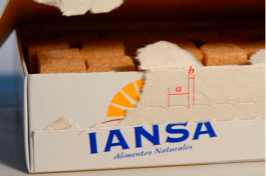
Physical Properties of Biomaterials and Food
Main Researcher
Fernando Osorio
Department of Food Science and Technology
Universidad de Santiago de Chile
Films can mechanically protect food, prevent contamination with microorganisms and prevent food quality loss due to mass transfer (e.g. moisture, gases, flavors, etc.). Moreover, edible films can be used for incorporating natural or chemical antimicrobial agents, antioxidants, enzymes or functional ingredients such as probiotics, minerals and vitamins. The objectives of our research group are: quality optimization of edible films by control of their nano-microstructures, investigation of the relationship between macroscopic properties of edible films (thermal, mechanical, rheological, appearance, stability) and nano-microscopic properties of their components, and study of the aging effect on the functional properties of edible films.
Nanocomposite edible films can be constituted by two or more organic layers of material with dimensions in the scale of nanometers (10–100 nm per layer). Organic layers can be formed by polyelectrolytes (proteins and polysaccharides), charged lipids and colloidal particles. The physical properties of these new edible films are dictated by their architectural complexity at the nanoscale and microscale. The adsorption (electrostatic attraction) of each of its layers is being characterized using a Fourier transfer infrared spectrophotometer (FT-IR). The adhesion of edible films on food substrates is being measured with atomic force microscopy (AFM), and their maximum storage and loss values shall be assessed with dynamic mechanical analysis (DMA).
We are also studying the biopolymeric constituents of edible films (type of hydrocolloid, carbohydrate, proteins, plasticizer, and functional agents) which determine their mechanical properties.
Specific research goal aims to improve the understanding of the aging mechanisms and its kinetics in the rubbery and glassy state of single and combination of biopolymers (hydrocolloids) at a macro, micro and nano scale using DSC, DMA, FT-IR and AFM techniques. These studies will give new insights of the structure of these coatings and how variations in their configuration at the molecular level can affect their nano and macroscopic properties.
On the other hand, two central aims have been considered in using the image analysis methodology on images obtained from nano, micro and macroscopic techniques. First, is to assist in predicting food's macroscopic properties such as color, geometry, appearance, crispness and texture characteristics; and, second, to study the effects introduced by coatings on food's microstructure and how these coatings affect food visual appeal.
.
Physical Properties of Soft Matter: Food at interfaces
Main Researcher
Francisco Melo (Director)
Deparment of Physiscs
Universidad de Santiago de Chile
Atomic force microscopy applied to food rheology: We are applying AFM for the study and understanding of food properties with the purpose of solving problems related to this area. In a tight interaction with Prof. Osorio´s group, we use AFM to investigate polysaccharides which are mainly used as thickeners through the observation of relevant parameters in structural changes, aiming at providing valuable insight onto the mechanics and self-organization properties of these molecules. Optical and magnetic tweezers are being developed to investigate the mechanical properties of single molecules of our interest.
-Wetting of fruit surfaces. To avoid bursting, and even cracking of the fruit cuticle, we are working on improving the mechanical properties of the surface by adding protective or edible films whose suitability requires knowledge of surface chemistry to improve/inhibit adhesion or wetability. In the same fashion, we undertake studies of surface topology and interactions by AFM techniques. Dynamics of micro and nanodrops on top of such surfaces will be investigated. This study aims at producing relevant information for edible film optimization.
-Vesicles for micropackaging: we are exploring the potential of vesicles in selective encapsulation and delivery of phenolic compounds, antibiotics and proteins among others. The methodological aspects of this investigation will be optimized in collaboration with food groups.
-Bio mineralization based degradable films. Our expertise in biomineralization is a source of inspiration for producing micro- and nanocomposites biomimetically, and set the basis for scaling our research efforts towards the design, characterization and production of novel nanocomposite material for food packaging and technology. Nanocomposites are being designed by combining natural (i.e. starch, chitosan, cellulose) or synthetic polymers (i.e.polyethylene, polyesters) with calcium carbonate or other inorganic salts or oxides of different particle sizes and by using different compatibilizers when needed to produce variable films with taylored mechanical properties.
.
